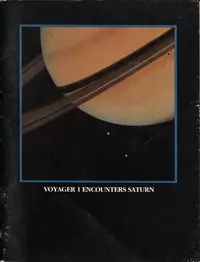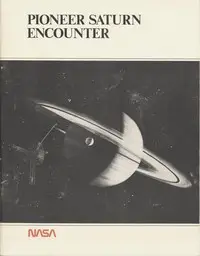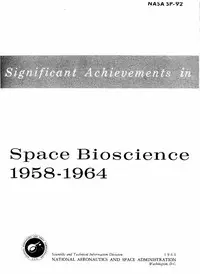"Voyager Encounters Jupiter" by NASA is a compelling account of the Voyager mission's journey to Jupiter, highlighting the discoveries made in the late 1970s that revolutionized our view of the solar system. The book, filled with detailed images and information, captures the excitement of this era in space exploration, showcasing Jupiter's dynamic atmosphere, including the Great Red Spot, and the unique characteristics of its moons like Io's volcanoes and Europa's icy shell, and Ganymede and Callisto distinctive geographic features. It emphasizes the mission’s scientific contributions, such as revealing Jupiter's powerful magnetic field and the complex interactions between Jupiter and its moons, reflecting the optimistic spirit of discovery that defined the late 20th century.

Voyager Encounters Jupiter
By United States. National Aeronautics and Space Administration
Embark on a journey to witness explosive volcanoes, giant storms, and icy landscapes as a spacecraft unveils the mysteries of a distant gas giant and its captivating moons.
Summary
About the AuthorThe National Aeronautics and Space Administration is an independent agency of the U.S. federal government responsible for the civil space program, aeronautics research, and space research. Established in 1958, it succeeded the National Advisory Committee for Aeronautics (NACA) to give the U.S. space development effort a distinct civilian orientation, emphasizing peaceful applications in space science. It has since led most of America's space exploration programs, including Project Mercury, Project Gemini, the 1968–1972 Apollo Moon landing missions, the Skylab space station, and the Space Shuttle. Currently, NASA supports the International Space Station (ISS) along with the Commercial Crew Program, and oversees the development of the Orion spacecraft and the Space Launch System for the lunar Artemis program.
The National Aeronautics and Space Administration is an independent agency of the U.S. federal government responsible for the civil space program, aeronautics research, and space research. Established in 1958, it succeeded the National Advisory Committee for Aeronautics (NACA) to give the U.S. space development effort a distinct civilian orientation, emphasizing peaceful applications in space science. It has since led most of America's space exploration programs, including Project Mercury, Project Gemini, the 1968–1972 Apollo Moon landing missions, the Skylab space station, and the Space Shuttle. Currently, NASA supports the International Space Station (ISS) along with the Commercial Crew Program, and oversees the development of the Orion spacecraft and the Space Launch System for the lunar Artemis program.











![Birds and Nature Vol. 11 No. 3 [March 1902]
Illustrated by Color Photography by Various](https://cdn.a2-host.cloud/WQaPrkxZpnbR7NYZNbg5n7cLfbALlh9ae1VI5p0be8s/rs:fill:215:325:0/g:ce/aHR0cHM6Ly9zcC1hc3NldHMuczMudXMtd2VzdC0wMDQuYmFja2JsYXplYjIuY29tL2Jvb2svNDc1NjkvQmlyZHNfYW5kX05hdHVyZV9Wb2xfMTFfTm9fM19NYXJjaF8xOTAyX0lsbHVzdHJhdGVkX2J5X0NvbG9yX1Bob3RvZ3JhcGh5X2NvdmVyLmpwZw.webp)



